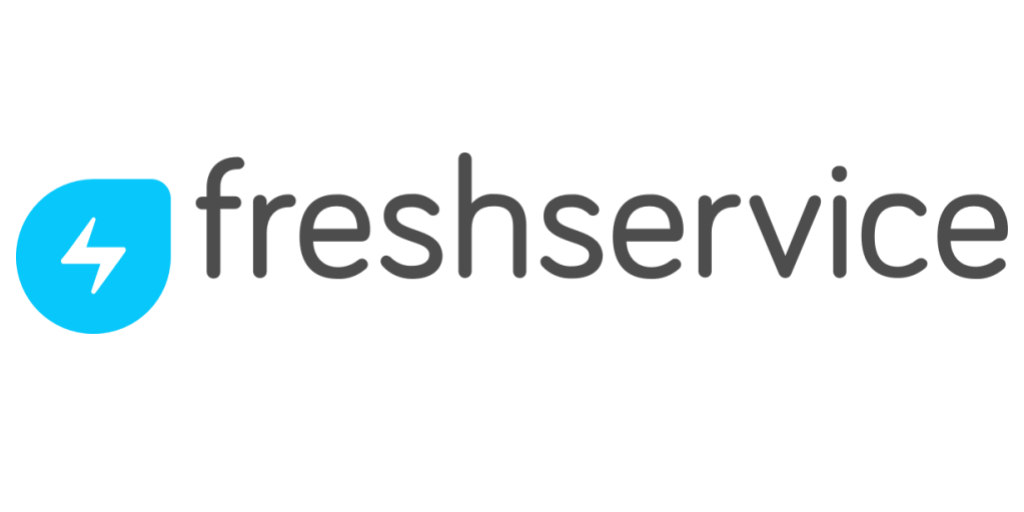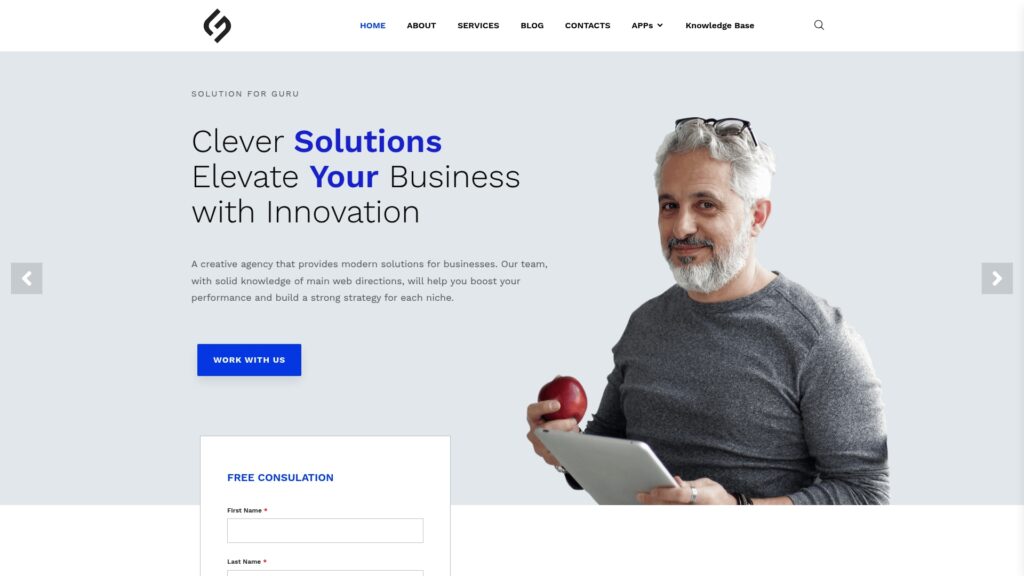ITSM for Beginners – Where to Start?

In today’s rapidly evolving digital landscape, organizations increasingly depend on technology to drive their business operations. Consequently, the need for effective IT Service Management (ITSM) has never been more critical. Whether you’re a recent graduate looking to enter the IT field, a professional seeking to transition into ITSM, or a business owner wanting to understand how ITSM can benefit your organization, this comprehensive guide will provide you with the essential knowledge and practical steps to begin your ITSM journey. Furthermore, we’ll explore how modern ITSM software solutions like Freshservice, ManageEngine, and Zendesk can accelerate your path to success in this dynamic field.
Table of Contents
- Quick Summary
- What Are the Key Points to Start a Career in ITSM?
- How Do Freshservice, ManageEngine, and Zendesk Relate to ITSM for Beginners?
- What is ITSM and Why Should Beginners Care?
- What Are the Core Components of ITSM?
- How Does ITSM Differ from Traditional IT Support?
- What Skills Do You Need to Start in ITSM?
- Which ITSM Frameworks Should Beginners Learn First?
- How Can ITSM Software Tools Help Beginners?
- What Are the Best Entry-Level ITSM Roles?
- How Do You Build Practical ITSM Experience?
- What Certifications Should ITSM Beginners Pursue?
- How Do You Create an ITSM Career Development Plan?
- Summing up
- Frequently Asked Questions
- Benefits of Cooperation with Solution for Guru Company
Quick Summary
Starting a career in ITSM requires understanding fundamental service management principles, developing both technical and soft skills, gaining hands-on experience with ITSM tools, and pursuing relevant certifications. Additionally, beginners should focus on learning established frameworks like ITIL, familiarizing themselves with popular ITSM software platforms such as Freshservice, ManageEngine, and Zendesk, and building a network within the ITSM community. Moreover, success in ITSM demands a service-oriented mindset, continuous learning attitude, and the ability to bridge the gap between technology and business needs.
What Are the Key Points to Start a Career in ITSM?
Beginning a career in ITSM involves several critical steps that build upon each other. First and foremost, you need to understand what ITSM entails and how it adds value to organizations. Subsequently, you should:
- Develop foundational knowledge of ITSM concepts, terminology, and best practices
- Acquire relevant technical skills including basic networking, cloud computing, and database management
- Master ITSM software tools like Freshservice, ManageEngine, and Zendesk to gain practical experience
- Pursue industry certifications starting with ITIL Foundation
- Build soft skills including communication, problem-solving, and customer service
- Create a professional network through LinkedIn, ITSM forums, and local user groups
- Gain hands-on experience through internships, volunteer work, or entry-level positions
How Do Freshservice, ManageEngine, and Zendesk Relate to ITSM for Beginners?
These three platforms represent excellent starting points for beginners entering the ITSM field:
Freshservice

Freshservice offers an intuitive, cloud-based ITSM solution that’s particularly beginner-friendly. Its modern interface and comprehensive feature set make it ideal for learning core ITSM concepts without overwhelming complexity. Furthermore, Freshservice provides excellent documentation and training resources that help beginners understand incident management, change management, and asset management processes.
ManageEngine

ManageEngine ServiceDesk Plus provides a robust ITSM platform that covers all major ITIL processes. For beginners, it offers the advantage of both cloud and on-premises deployment options, allowing learners to understand different implementation approaches. Additionally, ManageEngine’s extensive knowledge base and community forums provide valuable learning resources.
Zendesk

While primarily known for customer service, Zendesk‘s ITSM capabilities offer beginners a unique perspective on service management from a customer-centric viewpoint. This platform excels in teaching the importance of user experience in ITSM, making it particularly valuable for those interested in service desk roles.
What is ITSM and Why Should Beginners Care?
IT Service Management represents a strategic approach to designing, delivering, managing, and improving the way IT services are provided to an organization. Unlike traditional IT support that focuses solely on fixing technical issues, ITSM takes a holistic view of IT services throughout their entire lifecycle. Consequently, ITSM professionals work to ensure that IT services align with business needs and deliver measurable value.
For beginners, understanding ITSM is crucial because it represents the future of IT operations. Organizations worldwide are transitioning from reactive, break-fix IT models to proactive, service-oriented approaches. This shift creates numerous opportunities for professionals who understand how to manage IT as a service rather than merely as technology. Moreover, ITSM skills are transferable across industries, making it an excellent career choice for long-term growth.
The demand for ITSM professionals continues to grow as digital transformation accelerates across all sectors. According to industry reports, ITSM-related roles consistently rank among the most in-demand IT positions. Furthermore, ITSM careers offer diverse paths, from technical roles to management positions, providing flexibility for career progression.
What Are the Core Components of ITSM?
Understanding the fundamental components of ITSM is essential for beginners. These components form the foundation upon which all ITSM practices are built:
Service Strategy
Service strategy focuses on understanding organizational objectives and determining how IT services can support these goals. For beginners, this means learning to think beyond technology and considering business outcomes. Tools like Freshservice help visualize service portfolios and track how services contribute to business value.
Service Design
Service design involves creating new services or modifying existing ones to meet changing business needs. Beginners should understand how to document service requirements, design service level agreements (SLAs), and plan for service continuity. ManageEngine provides excellent templates and workflows that guide beginners through the service design process.
Service Transition
This component manages the implementation of new or changed services into the production environment. Beginners need to understand change management, release management, and knowledge management processes. Zendesk‘s change management features offer practical examples of how to control and document service transitions effectively.
Service Operation
Service operation ensures that services are delivered effectively and efficiently on a day-to-day basis. This includes incident management, problem management, and request fulfillment. All three platforms—Freshservice, ManageEngine, and Zendesk—excel in providing intuitive interfaces for managing service operations.
Continual Service Improvement
CSI focuses on identifying and implementing improvements to services and processes. Beginners should learn how to measure service performance, analyze trends, and propose improvements. Modern ITSM tools provide built-in analytics and reporting features that make CSI accessible to beginners.
How Does ITSM Differ from Traditional IT Support?
Understanding the distinction between ITSM and traditional IT support is crucial for beginners entering the field. Traditional IT support typically operates in a reactive mode, responding to issues as they arise. In contrast, ITSM takes a proactive, service-oriented approach that focuses on preventing problems and continuously improving service delivery.
| Aspect | Traditional IT Support | ITSM Approach |
|---|---|---|
| Focus | Technology and equipment | Services and business value |
| Approach | Reactive problem-solving | Proactive service management |
| Metrics | Technical metrics (uptime, response time) | Business metrics (service availability, user satisfaction) |
| Organization | Siloed teams | Integrated service teams |
| Documentation | Minimal or ad-hoc | Comprehensive and standardized |
| Tools | Basic ticketing systems | Comprehensive platforms like Freshservice, ManageEngine, Zendesk |
| Customer Interaction | Transactional | Relationship-based |
| Improvement | Sporadic | Continuous and measured |
Furthermore, ITSM emphasizes standardization and repeatability. While traditional IT support might solve the same problem differently each time, ITSM establishes standard procedures and workflows. This standardization, supported by tools like ManageEngine‘s workflow automation features, ensures consistent service quality and enables continuous improvement.
What Skills Do You Need to Start in ITSM?

Entering the ITSM field requires a balanced combination of technical knowledge, business acumen, and interpersonal skills. Understanding these requirements helps beginners focus their learning efforts effectively.
Technical Skills
While ITSM isn’t purely technical, foundational IT knowledge remains important. Beginners should understand:
- Basic networking concepts and protocols
- Operating systems (Windows, Linux basics)
- Cloud computing fundamentals
- Database concepts
- Security basics
- Familiarity with ITSM tools like Freshservice, ManageEngine, or Zendesk
Business Skills
ITSM bridges IT and business, requiring professionals to understand:
- Business process analysis
- Financial management basics
- Project management fundamentals
- Risk assessment and management
- Vendor management
- Service level management
Soft Skills
Perhaps most importantly, ITSM professionals need strong soft skills:
- Communication: Ability to explain technical concepts to non-technical stakeholders
- Problem-solving: Analytical thinking to identify root causes and develop solutions
- Customer service: Focus on user experience and satisfaction
- Teamwork: Collaboration across different departments and teams
- Adaptability: Flexibility to handle changing priorities and technologies
- Time management: Ability to prioritize tasks and manage multiple requests
Which ITSM Frameworks Should Beginners Learn First?
ITSM frameworks provide structured approaches to service management. For beginners, understanding these frameworks is essential for speaking the language of ITSM and implementing best practices.
ITIL (Information Technology Infrastructure Library)
ITIL remains the most widely adopted ITSM framework globally. Beginners should start with ITIL because:
- It provides comprehensive coverage of ITSM processes
- Most organizations use ITIL terminology and concepts
- ITIL certifications are widely recognized
- Tools like Freshservice and ManageEngine are built around ITIL principles
Starting with ITIL Foundation certification gives beginners a solid grounding in service management concepts. The framework’s latest version, ITIL 4, incorporates modern practices like Agile and DevOps, making it relevant for today’s IT environment.
COBIT (Control Objectives for Information and Related Technologies)
While more focused on governance, COBIT complements ITIL by providing a framework for aligning IT with business objectives. Beginners interested in IT governance and compliance should explore COBIT after mastering ITIL basics.
ISO/IEC 20000
This international standard for ITSM provides certification for organizations rather than individuals. However, understanding ISO 20000 requirements helps beginners appreciate the importance of standardized service management practices.
How Can ITSM Software Tools Help Beginners?
Modern ITSM software platforms serve as practical learning environments for beginners. These tools embody ITSM best practices and provide hands-on experience with real-world processes.
Learning Through Freshservice
Freshservice offers several advantages for beginners:
- Intuitive Interface: Clean, modern design reduces learning curve
- Built-in Workflows: Pre-configured processes teach ITSM best practices
- Comprehensive Training: Free resources and certifications available
- Cloud-based Access: No complex installation required
- AI-powered Features: Introduction to modern ITSM capabilities
Beginners can start with Freshservice’s free trial to explore incident management, asset management, and service catalog features. The platform’s gamification elements make learning engaging and track progress effectively.
Exploring ManageEngine ServiceDesk Plus
ManageEngine provides deeper technical capabilities:
- Extensive Customization: Learn how to tailor ITSM to specific needs
- Integrated ITOM: Understanding the connection between service and operations management
- Robust Reporting: Learn to measure and present service metrics
- Multi-language Support: Valuable for global career opportunities
ManageEngine’s community edition allows beginners to install and configure a full ITSM suite, providing valuable hands-on experience with system administration aspects of ITSM.
Mastering Zendesk for ITSM
Zendesk‘s approach teaches important lessons:
- Customer-centricity: Understanding the end-user perspective
- Omnichannel Support: Managing services across multiple communication channels
- Integration Capabilities: Learning to connect ITSM with other business systems
- Simplicity: Appreciating the value of user-friendly design
What Are the Best Entry-Level ITSM Roles?
Understanding available entry-level positions helps beginners target their job search and skill development effectively. Moreover, knowing the typical career progression path enables better long-term planning.
Service Desk Analyst
The service desk represents the most common entry point into ITSM. Responsibilities include:
- First-line incident resolution
- User request fulfillment
- Ticket management using tools like Freshservice or Zendesk
- Basic troubleshooting and escalation
This role develops essential ITSM skills including communication, problem-solving, and familiarity with ITSM tools. Furthermore, service desk experience provides insight into user needs and common IT challenges.
Junior ITSM Analyst
ITSM analysts support process improvement and administration:
- Maintaining ITSM tool configurations
- Creating reports and dashboards
- Supporting process documentation
- Assisting with service catalog management
Working with platforms like ManageEngine in this role provides deeper technical understanding of ITSM implementations.
Change Coordinator
Change coordination offers exposure to critical ITSM processes:
- Scheduling and coordinating changes
- Maintaining change calendars
- Facilitating Change Advisory Board meetings
- Tracking change success rates
This role develops project management and communication skills while providing visibility into how organizations manage IT changes.
Asset Management Specialist
Asset management combines technical and business skills:
- Maintaining hardware and software inventories
- License compliance tracking
- Asset lifecycle management
- Cost optimization analysis
Modern ITSM platforms include robust asset management capabilities, making this an excellent entry point for detail-oriented beginners.
How Do You Build Practical ITSM Experience?
Gaining hands-on experience represents one of the biggest challenges for ITSM beginners. However, several strategies can help build practical skills even without formal employment.
Personal Lab Environment
Creating a personal ITSM lab provides unlimited learning opportunities:
- Install free or trial versions of ITSM tools
- Configure basic workflows and processes
- Practice common scenarios like incident management
- Document your learning journey
Tools like ManageEngine offer community editions perfect for lab environments. Additionally, cloud-based solutions like Freshservice provide free trials with full functionality.
Volunteer Opportunities
Non-profit organizations often need ITSM help:
- Offer to implement basic ITSM processes
- Help document IT procedures
- Train staff on ITSM best practices
- Gain real-world experience while contributing to worthy causes
Freelance Projects
Small businesses frequently need ITSM assistance:
- Service desk setup and configuration
- Process documentation
- Tool selection and implementation
- Basic training and support
Platforms like Upwork and Freelancer list ITSM-related projects suitable for beginners. Furthermore, these projects provide portfolio material for future job applications.
Open Source Contributions
Contributing to open-source ITSM projects develops both technical skills and community connections:
- Documentation improvements
- Testing and bug reporting
- Feature suggestions
- Community support
What Certifications Should ITSM Beginners Pursue?

Certifications validate knowledge and demonstrate commitment to professional development. For ITSM beginners, certain certifications provide more value than others.
Foundation Level Certifications
| Certification | Provider | Focus | Typical Cost | Preparation Time |
|---|---|---|---|---|
| ITIL Foundation | PeopleCert | ITSM fundamentals | $350-500 | 2-4 weeks |
| CompTIA IT Fundamentals | CompTIA | Basic IT concepts | $130 | 2-3 weeks |
| HDI Support Center Analyst | HDI | Service desk skills | $165 | 1-2 weeks |
Tool-Specific Certifications
Many ITSM software vendors offer certifications:
- Freshservice Certified Administrator: Demonstrates platform proficiency
- ManageEngine Certified Professional: Validates technical implementation skills
- Zendesk Support Administrator: Confirms customer service platform expertise
These vendor certifications often cost less than framework certifications and provide immediate practical value. Moreover, employers value candidates who can immediately contribute using their existing tools.
Advanced Certifications for Future Growth
After gaining experience, consider:
- ITIL Specialist modules
- COBIT Foundation
- Project Management Professional (PMP)
- Agile/Scrum certifications
How Do You Create an ITSM Career Development Plan?
Strategic career planning ensures continuous growth and advancement in ITSM. Beginners should develop both short-term and long-term goals.
Year 1: Foundation Building
Focus on establishing core competencies:
- Complete ITIL Foundation certification
- Gain proficiency in at least one ITSM tool (Freshservice, ManageEngine, or Zendesk)
- Develop customer service skills
- Build professional network
- Document achievements and learning
Years 2-3: Specialization
Identify and develop specialized skills:
- Pursue advanced certifications
- Master additional ITSM tools and technologies
- Lead small projects or initiatives
- Mentor newer team members
- Contribute to process improvements
Years 4-5: Leadership Development
Prepare for senior roles:
- Develop management skills
- Understand business strategy
- Lead major implementations
- Build vendor relationships
- Consider consulting opportunities
Continuous Learning Strategies
ITSM evolves rapidly, requiring ongoing education:
- Follow industry blogs and publications
- Attend webinars and conferences
- Join professional associations
- Participate in online communities
- Experiment with new tools and technologies
Summing up
Starting a career in ITSM offers excellent opportunities for professional growth and development. The field’s emphasis on service delivery, business alignment, and continuous improvement creates diverse career paths suitable for various interests and skill sets. Furthermore, the increasing adoption of digital technologies across all industries ensures strong demand for ITSM professionals.
Success in ITSM requires balancing technical knowledge with business acumen and interpersonal skills. Beginners should focus on understanding fundamental frameworks like ITIL while gaining practical experience with modern ITSM platforms. Tools like Freshservice, ManageEngine, and Zendesk not only facilitate learning but also represent the types of systems used in real-world environments.
The journey into ITSM begins with small steps: understanding basic concepts, earning foundational certifications, and gaining hands-on experience. By leveraging available resources, including free trials of platforms like Freshservice, community editions of ManageEngine, and the extensive documentation provided by vendors like Zendesk, beginners can build competency without significant financial investment.
Remember that ITSM is ultimately about delivering value through service. Whether you’re configuring workflows in ManageEngine, designing service catalogs in Freshservice, or managing customer interactions in Zendesk, always maintain focus on improving user experience and business outcomes. This service-oriented mindset, combined with technical skills and continuous learning, forms the foundation for a successful ITSM career.
Frequently Asked Questions
Entry-level ITSM positions typically offer competitive salaries that vary by location and industry. Service desk analysts generally start between $35,000-$50,000 annually, while junior ITSM analysts may earn $45,000-$65,000. These figures increase significantly with experience and certifications. Furthermore, proficiency with specific tools like Freshservice, ManageEngine, or Zendesk can command premium salaries, as organizations value immediately productive employees.
Achieving basic proficiency in ITSM typically requires 6-12 months of dedicated learning and practice. This includes completing ITIL Foundation certification, gaining familiarity with at least one ITSM platform, and understanding core processes. However, true expertise develops over 2-3 years of practical experience. Accelerate your learning by actively using tools like Freshservice’s free trial, participating in ManageEngine’s community forums, or completing Zendesk’s training programs.
Absolutely! Many successful ITSM professionals come from non-IT backgrounds. Fields like customer service, project management, and business analysis provide transferable skills valuable in ITSM. The key is supplementing your existing skills with IT knowledge and ITSM-specific training. Start with user-friendly platforms like Freshservice or Zendesk, which emphasize service delivery over technical complexity, then gradually build technical skills using resources from comprehensive platforms like ManageEngine.
Benefits of Cooperation with Solution for Guru Company
Solution for Guru specializes in helping organizations and individuals navigate their ITSM journey successfully. Their comprehensive approach to ITSM implementation and training provides several key benefits for beginners and organizations alike:
Expert Guidance and Mentorship: Solution for Guru offers personalized mentoring programs that connect ITSM beginners with experienced professionals. This one-on-one guidance accelerates learning and helps avoid common pitfalls.
Hands-on Training Programs: Unlike theoretical courses, Solution for Guru provides practical, hands-on training using real-world scenarios and leading ITSM tools including Freshservice, ManageEngine, and Zendesk.
Career Development Support: Beyond technical training, they offer career coaching, resume optimization, and interview preparation specifically tailored for ITSM roles.
Industry Connections: Solution for Guru maintains strong relationships with employers seeking ITSM talent, providing networking opportunities and job placement assistance for qualified candidates.
Continuous Learning Resources: Members gain access to updated learning materials, webinars, and workshops that ensure skills remain current with industry trends.
Implementation Expertise: For organizations beginning their ITSM journey, Solution for Guru provides implementation services that establish best practices from the start, creating learning opportunities for internal staff.
By partnering with Solution for Guru, ITSM beginners gain a significant advantage in launching and advancing their careers, while organizations ensure successful ITSM adoptions that deliver measurable business value.

Recommended:
- ITSM Change Management
- ITSM Integration: Streamlining IT Service Management for Modern Enterprises
- ITSM Problem Management
- What Are ITSM Ticketing Tools?
- ITSM Jobs: Your Guide to a Thriving Career in IT Service Management
- Why are ITSM Best Practices essential?
- What is an IT Management Service Provider?
- Comprehensive Guide to ITSM Tools: Features, Benefits, and Top Solutions
- What is IT Service Management (ITSM)?



